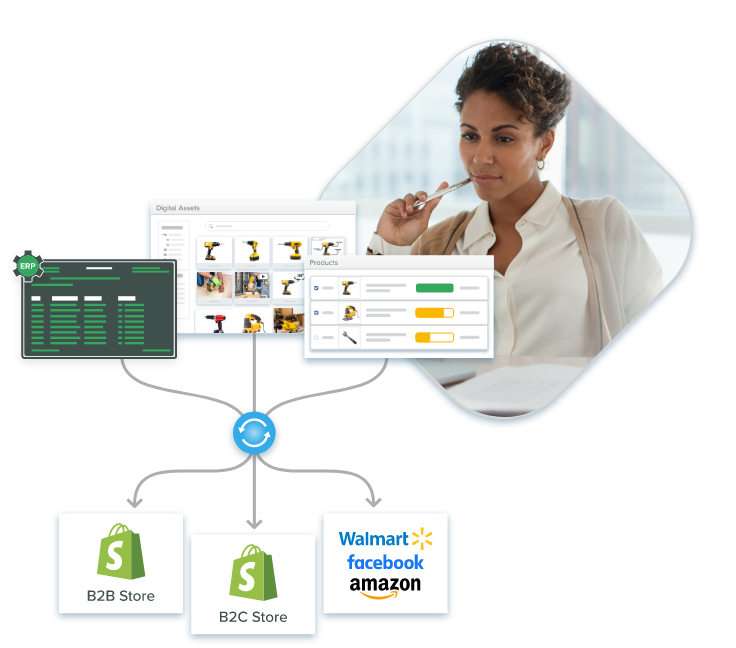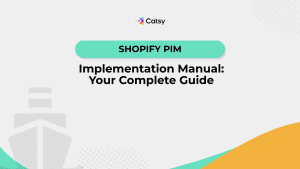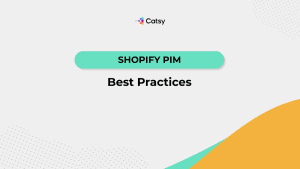Overwhelmed with Tech Tools? MarTech Essentials You Really Need in 2024

- The MarTech landscape offers an overwhelming array of solutions, yet budgets are shrinking, forcing difficult investment choices over MarTech essentials.
- Rather than chasing innovations, brands should optimize existing platforms to maximize ROI based on core goals and pain points.
- Brands should evaluate new MarTech tools only after optimizing existing solutions - they should hold them to clear criteria like ROI and ease of integration.
In this Article
The marketing technology landscape offers an overwhelming array of solutions – over 11,000 and counting. Not only does this make it difficult for marketing teams to identify which tools are MarTech essentials, the pressure is more intense this year as budgets remain flat or shrinking across many organizations. This forces difficult trade-offs over where to invest limited resources.
It’s tempting to chase the latest innovations, from AI-powered personalization to augmented reality product configurators. However, spreading efforts and marketing spend too thin risks diluting returns across the stack. Most marketing teams would achieve greater leverage by doubling down on the basics.
As we enter 2024, this article recommends a 3-step approach – first, identify core goals, workflows, and pain points. Next, optimize existing platforms to maximize ROI. Only then evaluate new technologies, but hold them to clear, measurable criteria like ROI and integration complexity. To learn more about this focused strategy and how it will set you up for success, read this article to end!

Current Marketing Technology Landscape
Marketing technology (MarTech) is more saturated than ever before. According to the 2023 MarTech Replacement Survey, marketers have over 11,000 MarTech solutions to choose from.
But there is a problem. The same survey found that only 16% of the respondents used marketing tools for six years or more. 31% discarded MarTech within two years of use. If anything, the message is that the market is awash with MarTech, but marketing teams cannot find tools capable of serving them for a long time.
The MarTech longevity problem aside, this landscape is more lively and dynamic than ever. First, the size. The global MarTech market size was $338 Billion in 2022, says an IMARC Group report. IMARC expects the market to exhibit a 22.2% CAGR (compound annual growth rate) between 2023 and 2028. This massive growth could see the market’s value reach $1.2 trillion by 2028.
The report details further that three main factors will power the exponential growth of MarTech. They are:
- The growing demand for social media management tools.
- The rising employment of chatbots
- The increasing need to gain a holistic view of marketing efforts and measure the impact of campaigns among marketers.
An essential factor that misses out on the IMARC Group analysis is the increasing number of tools available to marketers.
Given the vastness of marketing tools and use cases, breaking them into distinct categories is challenging. However, it is common to divide them into five broad groups: analytics, personalization, content systems, marketing automation, and emerging technologies.

Analytics
Analytics serves as the cornerstone of modern marketing strategies, offering actionable insights derived from data. The marketing analytics sector is one of the largest and provides tools essential to marketing strategies’ success. No wonder Mordor Intelligence expects the market to reach $5.59 billion this year.
Some critical components of the market include:
- Predictive analytics: Anticipating market trends and demand for industrial products based on historical data. Some examples of MarTech solutions in this group include Salesforce Einstein and IBM Watson.
- Customer journey analytics: Mapping and analyzing the complete customer journey to optimize touchpoints for buyers. Tools include Google Analytics and Adobe Analytics.
- Real-time analytics: Monitoring and responding to live data for immediate adjustments in marketing strategies. Tools include Hotjar and Mixpanel.

Personalization
The typical buyer for industrial brands is an entity that purchases products in bulk, either for internal use or to sell to final consumers. However, these entities are led by individuals who bring their personal biases to the buying process. As such, personalization is pivotal in capturing and retaining business-to-business (B2B) audience attention.
The specific niches under this category include (but are not limited to):
- Behavioral personalization: Tailoring content based on the procurement behavior and preferences of B2B buyers. Examples of tools relevant in this area are Dynamic Yield and Salesforce’s Interaction Studio (formerly Evergage).
- AI-driven personalization: Leveraging artificial intelligence (AI) to analyze large datasets and deliver hyper-personalized buyer experiences. Tools include Adobe Target and Acquia Lift.
- Cross-channel personalization: Ensuring a consistent, personalized experience across various marketing channels for B2B clients. Tools include Sailthru and Optimizely.

Content systems
Content has been the king of marketing strategies since Bill Gates recognized this fact in a 1996 essay. In fact, a Statista analysis shows that the share of organizations worldwide with content marketing as part of their overall marketing strategies was 90% in 2022, about 20% higher than in 2019. So, if anything, the regal bearing of content marketing is strengthening.
However, this marketing strategy wouldn’t be anywhere near successful were it not for robust content systems. The systems encompass tools and platforms that streamline content creation, distribution, and management.
The critical components of this category of MarTech tools are:
- Content creation tools: Facilitating designing and creating engaging and informative content for buyers. Some examples of tools include Canva for Enterprise and Grammarly.
- Content distribution platforms: Ensuring seamless dissemination of product information across multiple channels for construction industry stakeholders. Examples of tools include Outbrain and HubSpot CMS.
- Content Management Systems (CMS): Simplifying the organization and publication of content for B2B brands in the power tools sector. Tools include Contentful and WordPress VIP.

Marketing automation
Automation is the linchpin for efficiency. Marketing automation tools allow marketers to systematize repetitive tasks and nurture leads through the B2B sales funnel. To demonstrate how significant this market is, Mordor Intelligence estimates that it will reach $5.83 billion in 2023, just a few million shy of the analytics solutions market value.
Some key components include:
- Email marketing automation: Sending targeted and personalized emails to B2B buyers based on their industry needs and purchasing behavior. Tools include Mailchimp and Salesforce Pardot.
- Lead nurturing automation: Implementing automated workflows to guide leads through the procurement process. Tools include Marketo and ActiveCampaign.
- Social media automation: Scheduling and managing social media posts to engage B2B audiences effectively. Tools include Buffer and Hootsuite.

Emerging technologies
One of the reasons for the dynamic nature of marketing technology is that new tools are created daily. Perhaps this explains why, according to a MarketingCharts.com study, 75% of marketers say they add new tools to their tech stack quarterly.
The current MarTech environment has seen tremendous developments regarding new technologies, but this discussion will discuss only the four most significant ones.
Augmented Reality (AR) and Virtual Reality (VR):
AR and VR help marketers create immersive product experiences for buyers – they engage customers and provide a unique experience with the product or brand. Some ways marketers use the technology include customized ad experiences, elevated social shopping, VR as a quasi-replacement for in-person events and conferences, and AR can overlay virtual elements to actual reality, allowing consumers to “test” products in real-life scenarios.Voice search optimization:
Marketers are using this technology to adapt content and search engine optimization (SEO) strategies to align with the rise of voice-activated search for B2B procurement.Blockchain in marketing:
Blockchain technology gained global attention when Satoshi Nakamoto launched Bitcoin in 2009. More than a decade later, the technology has transformed to become a disruptor of whole industries, not excluding marketing. In B2B marketing, companies use blockchain to optimize their content for digital platforms based on the data they gather. They also leverage the technology’s transparency and security capabilities to build customer loyalty programs.Artificial intelligence (AI):
According to HubSpot’s latest report, AI is the hottest new technology in the marketing landscape. The analysis established that most marketers use AI in some way – for example, 28% of marketers say they use AI to generate outlines for their content, such as blog posts, eBooks, or white papers, and 25% say they use the tech to create videos, such as short-form video content for social media platforms like TikTok, Reels, or YouTube Shorts. Some of the most prominent AI tools include ChatGPT, ChatSpot, Anthropic’s Claude, etc.

The MarTech Paradox
The current marketing technology landscape analysis affirms the claim that marketers are spoilt for choice. But available data points to a situation where brands are cutting marketing budgets at alarming quantities.
For example, the latest installment of the CMO Survey indicates that most companies in the United States cut their overall marketing spending from 10.4% in September 2022 to 2.9% in March 2023 – this marks a 72% drop!
Put differently, marketing teams today face a dilemma – while MarTech solutions are proliferating at a staggering rate, budgets are shrinking or remaining flat. This forces difficult decisions about where to invest limited resources for maximum impact and return.
On the one hand…
Exciting new technologies promise to deliver transformative capabilities, from AI-powered hyper-personalization to predictive marketing analytics. The temptation is to want to adopt these innovative tools to stay ahead of the curve.
For example, say you are a power tools manufacturer eager to deploy a cutting-edge product configuration engine that leverages augmented reality. But you are uncertain how that six-figure investment may be fair, and you do not have that kind of money to begin with. Should you optimize the existing tools for a better customer experience or scrap some expenses for the new fantastic tool?
This paradox underscores the need for a strategy, especially as brands plan for the new year. The following section shows you the wiser path to help set your marketing up for success. So, read on!

Doubling Down on the Basics
Yes, the wiser path is to double down on the basics! For example, instead of the power tools manufacturer investing in the augmented reality-powered product configuration engine, spending the money optimizing their core eCommerce platform for seamless omnichannel transactions would be wiser. But this is not to say that the former is a needless investment!
First, let’s get some facts straight.
The concept of “doubling down” comes from blackjack, which refers to doubling your bet after seeing your initial cards. When applied to business strategy, it means increasing your focus, investment, or resources in core areas proven to deliver results.
For industrial marketing technology, doubling down on the basics means optimizing investment and effort on foundational platforms that provide the highest ROI before considering new solutions.
Doubling down could mean things like:
- Spending more on Google Analytics training and implementation to maximize insights from existing data.
- Upgrading to the Salesforce Enterprise edition to unlock more CRM capabilities.
- Adding more high-quality content by hiring additional writers or developers for your CMS.
- Expanding advertising budgets on profitable channels like LinkedIn before testing new platforms.
The core argument is that you should identify areas of your tech stack that have demonstrated an evident ability to drive growth and ROI with target customers. Then, allocate more budget, resources, and focus to get the most from those high-impact platforms.
Let’s break down this idea further and focus on the strategies you could use to ensure the focus on the basics delivers the best results.

Focus on inventory core goals, workflows, and pain points
The starting point for doubling down on marketing technology basics is identifying your organization’s core goals, workflows, and pain points. This means stepping back from the minutiae of daily tasks and taking a big-picture view of priorities.
Let’s revisit the power tools manufacturer we met earlier and see how the company navigates this process. The company’s overarching goal may be to acquire more small construction firms as customers.
So, the core workflows in service of that goal involve lead generation through paid search and nurturing via email campaigns. The typical pain points could include poor multi-channel reporting on campaign KPIs and inadequate negative keyword management.
With clarity on high-level priorities, the company can then scrutinize its MarTech stack for opportunities to optimize spend and resources around addressing them.
Switching focus might entail things like:
- Investing more in analytics for holistic campaign insights
- Funneling budget from newer social platforms into proven lead-generation channels
- Implementing new keyword tools to maximize PPC effectiveness
Rather than getting distracted by vanity metrics or shiny new toys, focusing on how marketing technology can better achieve defined company goals and augment key workflows is crucial. Also, identifying and resourcing solutions for major staff pain points pays dividends.
If you adopt this outside-in, top-down approach of doubling down on basics, your brand can allocate the budget smartly towards getting the highest possible return from existing MarTech infrastructure. The bottom line is that going back to basics is not always appealing, but it works.

Assess opportunities to consolidate/optimize the MarTech stack
If you take a step back and look at your MarTech stack, chances are it consists of many different platforms and tools that have accumulated over time. It may feel like a complex patchwork of integrations that make your workflows more inefficient than they need to be.
So, before you invest in any new solutions, take the opportunity to critically evaluate your current stack for areas of consolidation and optimization.
For example, can some niche point solutions be replaced by broader platforms that offer integrated functionality? You could migrate multiple standalone social media dashboards into a consolidated management tool like Sprout Social. Or replace one-off affiliate marketing tools by utilizing the affiliate capabilities within your eCommerce platform.
How can brands go about this?
Consolidating to fewer, tightly integrated systems can streamline processes, reporting, and cross-channel data flows. It lets you focus your investment on scalable platforms rather than spreading resources too thin.
Legacy tools that struggle to meet modern needs are prime targets for replacement. You could swap outdated email platforms or web analytics for solutions like Mailchimp or Google Analytics 360, driving tangible improvements. Don’t hesitate to sunset solutions that are past their prime.
Taking advantage of volume discounts presents another opportunity – renegotiating contracts or consolidating spend with one strategic vendor partner may yield actual cost savings.
Consolidating and optimizing your current stack takes effort but enables you to maximize value from existing investments. However, do not forget to evaluate integration and efficiency opportunities critically – it is a crucial step before deploying any new marketing technology.

Consider investing more in foundational tools, or MarTech Essentials
The core message throughout this discussion so far has been that marketers must strike the right balance between the tools they already have and those they do not have but promise growth. And as brands make plans for 2024, they should not forget that foundational tools remain the most critical.
So, when determining where to allocate budget and resources within your marketing technology stack, prioritize foundational systems over specialized ancillary tools. Core platforms that manage critical workflows, data, and processes provide the backbone of any maturing MarTech environment.
Some examples of foundational tools worthy of further investment include:
Digital Asset Management (DAM)
Platforms for digital asset management, such as Catsy, offer a centralized location to store, manage, access, and distribute all the digital content within your organization. The centralized hub of DAM solutions serves as a unified source of truth throughout the content lifecycle, ensuring everyone utilizes the same approved and on-brand materials from your library. Also, the systems can seamlessly integrate with your content management systems, social media management solutions, marketing automation tools, and other work management solutions. Doubling down here mitigates content production bottlenecks.
Product Information Management (PIM)
While DAM manages digital assets, PIM manages the details of related products. A PIM tool like Catsy standardizes product data syndication across eCommerce sites, apps, catalogs, and more. Catsy PIM also integrates the DAM solution, streamlining mapping digital assets to product SKUs. So, optimizing investment in PIM homogenizes customer experiences across touchpoints, building trust.
Customer Relationship Management (CRM)
CRM is the core system capturing every customer interaction. Therefore, you should consider funneling additional budget into tools like Salesforce to unlock more sophisticated omnichannel workflow automation, analytics, and AI – this strengthens engagement capabilities.
Marketing automation
Solutions like Marketo track customer journeys and inform personalized multi-channel campaigns. Increased spending here heightens the continuity between marketing and sales.
Commerce & CMS platforms
Consumer-grade commerce experiences require significant investment. Allocating more resources to scalable eCommerce platforms like Shopify and content management systems like WordPress pays dividends through greater organic reach, conversion, and customer loyalty.
Getting foundations right is not glamorous but provides tremendous leverage. Therefore, increasing commitment and investment into these multifunctional MarTech basics will serve as the stable core of technology stacks as you build for the future.
Assuming you have taken a long, hard look at your current MarTech stack and feel the need to upgrade come the new year, how should you approach the choice of new tools to add? In that case, the following evaluation criteria may be invaluable.

Evaluation Criteria for Adding New Tools
After optimizing the existing infrastructure, gaps may still exist that new marketing technology tools could address. But before making the jump, evaluate possible solutions against decision-making criteria such as this:
A direct tie to core goals and activities
Any new MarTech tool under consideration should have a clear and measurable impact on achieving documented company and marketing goals. There should be a direct line of sight on how it will contribute to or enhance current activities in service of organizational priorities.
Provides clear ROI
You should calculate the return on investment of the new tool. The tools should offer transparent ROI analysis based on performance benchmarks like cost per lead, conversion rate lift, or incremental sales driven. Set measurable ROI thresholds when assessing options.
Optimizes workflows and team productivity
Rather than add complexity to MarTech ecosystems, new solutions should streamline workflows and enhance productivity. Prioritize tools your team is asking for that promise increased output or efficiency. Also, assess whether the solutions can automate repetitive tasks to allow refocusing of talent.
Easy integration
The new tools should seamlessly integrate with the existing stack to promote interoperability. To this end, review API availability, out-of-box connectors, and extensible custom integration capabilities. Solutions requiring complex new infrastructure negate efficiency gains.
Holding new MarTech additions to account against criteria like these helps B2B marketing teams to ensure decisions tie tightly to overarching organizational goals while scaling leanly.

Key Takeaways
As the new year approaches, marketing teams face a pivotal moment in evaluating technology stacks. On the one hand, the temptation is strong to pile on new ancillary MarTech solutions that promise growth. However, spreading budgets and focus too thinly limits efficiency and ROI from more foundational platforms.
Rather than add the latest shiny tools, establish a strategy centered on doubling down on basics already tied directly to core goals, workflows, and pain points. Also, optimize the resources, integration, and performance of current tools.
However, this is not to say brands should not eventually adopt new tools – gaps may still exist even in optimized stacks. The bar for adding solutions should be high based on clearly defined criteria assessing ROI, productivity gains, and integration complexity.
The marketing technology paradox refers to the situation where the number of MarTech solutions available to marketers has grown exponentially over 11,000 options. However, at the same time, marketing budgets at most companies are shrinking or remaining flat. This creates a dilemma for marketing teams – while lots of innovative new tools are available, there are limited resources to adopt them. It forces difficult tradeoff decisions about where to invest for maximum impact.
Doubling down on the basics means that marketers should increase their focus, investment, and resources into optimizing core, foundational marketing platforms that are already tied to organizational goals and workflows. This could involve things like spending more on training staff to maximize the capabilities of existing tools or upgrading to more advanced editions of current platforms. The key is to prioritize improving the performance of proven, high-impact systems rather than spreading efforts across too many additional tools that provide more marginal returns.
Examples of foundational marketing platforms that brands should focus investment on include: digital asset management (DAM) tools to centralize storing and managing creative assets, product information management (PIM) to standardize product data across channels, customer relationship management (CRM) to manage interactions, marketing automation to nurture leads, and critical commerce/CMS tools to drive conversions. These multifunctional platforms provide leverage across strategies, so optimizing them pays dividends.
Brands should hold any new marketing tools up against evaluation criteria such as: having a clear tie to core goals/workflow activities, providing demonstrable return on investment (ROI), enhancing team productivity through automation, and ease of integration with existing technology stack. New tools that require complex new supporting infrastructure may negate their efficiency gains.
Spreading budget, resources, and attention too widely across too many tools risks diluting the return on investment from any given solution. Getting the most from foundational platforms aligned to overarching priorities provides more leverage to then build upon by adding incremental tools. By taking an outside-in approach focused on goals over “shiny objects”, brands can scale their technology stacks strategically over time.




